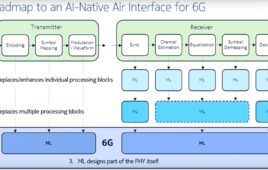Back in September, the Chinese government announced it launched successful tests of a quantum radar system, and has stood by those claims despite refutations from experts and government bodies around the world. While it’s not entirely certain whether or not the Chinese government is truly in possession (or developing) a radar system of this caliber, the ramifications could be potentially dire for the United States and its allies.
The China Electronics Technology Group Corporation (CETC) announced its quantum radar tests reached ranges up to 100 kilometers (62 miles), which the Chinese military could theoretically use to create a radar detection network by spacing these devices about 100 miles apart. If this is the case, China’s quantum radar would have five times the range of a prototype that was jointly developed by researchers from the United States, Canada, United Kingdom, and Germany.
A nation like China being in possession of a radar model this powerful would give their military an astronomical advantage over newly developed stealth fighters like the F-22 and F-35, both of which could be detected by quantum radar (and from 62 miles away) with optimal precision. According to military experts, a fighter jet stands little chance of escaping a defense missile strike once it’s detected by quantum radar.
Not only does quantum radar have better accuracy and range than other types of detection methods, but its signals are difficult to sabotage. While normal radar can be jammed by transmitting white noise on the same frequency, entangled photons are capable of retaining their quantum link. Attempts at breaking that link and distorting the signal of a quantum radar’s behavior would be immediate giveaways of attempts at interfering with the radar’s signal.
The onslaught of skepticism behind the authenticity of China’s claims derives from the concepts of physics that quantum radar uses that scientists are just beginning to understand. The theory behind quantum radar is an object changes its quantum properties after receiving its photonic signals. The figuring is that a pair of entangled photons can be created by splitting the original with a crystal. Applying this type of change to one entangled photon will have an immediate effect on its twin, regardless of distance. So a quantum radar generating a large number of entangled photon pairs and shooting one set of those twins into the air would receive detailed information about targets they encounter like its shape, location, speed, temperature, and even the target’s composition and what devices and other accessories it’s equipped with.
Officials and experts from North American and European countries believe a functioning quantum radar model doesn’t exist outside of a laboratory. Even if that was the case, a radar this sophisticated is difficult to build and reliably test, which is why there is so much skepticism behind China’s ongoing claims. The Chinese aren’t the only ones to have experimented with quantum radar. DARPA and Lockheed Martin both reportedly began working on their own models in recent years, but haven’t reported any progress since the inception of both projects.




